Emerald Ash Borer
One of Kinnucan’s best working on a contract with the City of Ames, IA doing Emerald Ash Borer injections

KINNUCAN AWARDED 2015 CONTRACTS FOR EMERALD ASH BORER CONTROL AND DUTCH ELM DISEASE
To date, Kinnucan has been awarded 2015 municipal contracts for the following cities and towns:
- The Village of Mount Prospect, Illinois (Emerald Ash Borer Control)
- The City of Naperville, Illinois (Emerald Ash Borer Control)
- The City of Park Ridge, Illinois (Dutch Elm Disease)
- The Village of Schaumburg, Illinois (Emerald Ash Borer Control)
- The City of Cedar Rapids, Iowa (Emerald Ash Borer Control)
- The City of Des Moines, Iowa (Emerald As Borer Control)
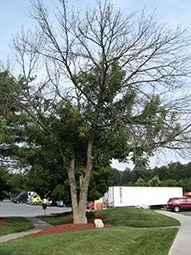
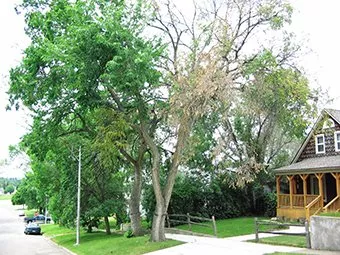
KINNUCAN CONTINUES WORK AT STONEBRIDGE DEVELOPMENT, LAKE BLUFF, ILLINOIS
Stonebridge, referred to as Lake Bluff’s Historic Garden Estate, is a new multi-home site to be developed by The Roanoke Group. Once developed, Stonebridge will also include a fully restored Jens Jensen landscape with over 12 acres of gardens. To help with the restoration and preservation, Kinnucan has been busy these last few weeks trimming deadwood, removing hazardous and non-native trees, as well as fertilizing weak trees.
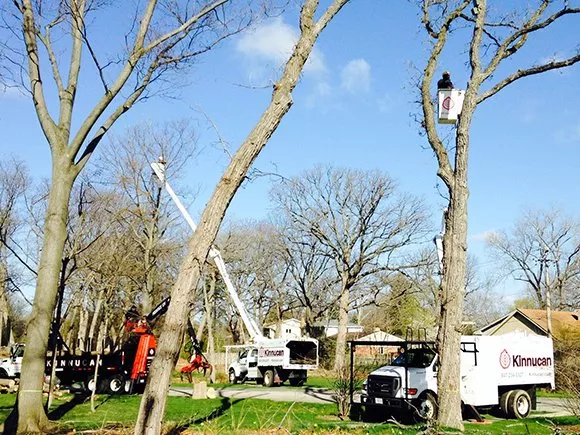
Kinnucan has been awarded the Emerald Ash Borer Control bid for the City of Naperville
Kinnucan has been awarded the Emerald Ash Borer Control bid for the City of Naperville for $263,600. This follows continuous EAB control work we have completed there from 2012, 2013, 2014.
Kinnucan awarded its Emerald Ash Borer Control bid in Des Moines, Iowa
The City of Des Moines, IA has awarded its Emerald Ash Borer Control bid to Kinnucan for $208,080. We will be sending part of our Plant Health Care Team to Iowa for several weeks this summer to begin treatment on their Ash trees.
Firewood & the Fight against EAB – The Do’s and Don’ts of Preserving Illinois Landscape
Before you begin to gather and transport firewood in Illinois for that beautiful campfire you are preparing for, there are a few things you need to know. Due to the infestation of Emerald Ash Borer, or EAB, in the State of Illinois, there are state and federal government regulations that must be adhered to when you purchase, cut down, or even gather what appears to be “just dead” wood. More importantly, you need to be aware of the devastating affect a simple plan of a campfire can have on the Illinois Landscape when you transport just one small piece of infested wood to a different location.
The entire State of Illinois has been federally regulated by placing all ash products under quarantine. This includes ash nursery stock, green lumber, logs, stumps, roots, branches and non-composited wood chips. Because distinguishing the hardwood firewood type is nearly impossible by sight – all hardwood firewood (oak, maple, hickory, and ash) are regulated under the quarantine.
What this means for firewood distributors and producers is they are not allowed to move any hardwood firewood out of the State of Illinois. (There are very stringent regulations and precautions that must be followed and inspection made before migration out of State will even be considered permissible.)
Now, here is where the tricky part of the quarantine comes in, more so for those of us who just want to build a simple fire to relax around on a cool summer night. The USDA allows firewood that originated in Illinois to move freely within Illinois State lines. However, The Illinois Department of Agriculture has an interior quarantine in place that states firewood that originated in the interior quarantine (a known infested area) must not leave the interior quarantine. In other words, the IDA urges (and enforces) confirmed infested areas to burn ash firewood at origin site and transporting firewood off site should be kept to an almost non-existent minimal. Keep in mind, there are those stringent regulations by the IDA for migrating, that also apply within the interior boundaries, mentioned above. The ultimate goal is to keep all firewood local. Simply stated, firewood that is produced, distributed, sold, bought, gathered, etc. locally should be burned locally. No matter where you camp in the State of Illinois, you will be asked to burn all of your firewood before leaving, and you will not be permitted to transport left over wood home with you. “No log shall be left unburned.”
Educating the citizens of Illinois of the risks associated with movement of firewood and other products is an ultimate goal that needs to be met, especially in these critical times where more and more ash trees are dying and becoming readily available as firewood. So think before you pick up that dead branch, or buy your next bushel of firewood and start traveling with it. Help preserve the Illinois Landscape by knowing the boundaries of the quarantines, and better yet, know you could be hauling a lot more than just wood.
If you have any questions, please contact one of our tree experts who specialize in the fight against Emerald Ash Borer and the preservation of our landscape. Let us inspect before you infest!
Fortifying Our Forest
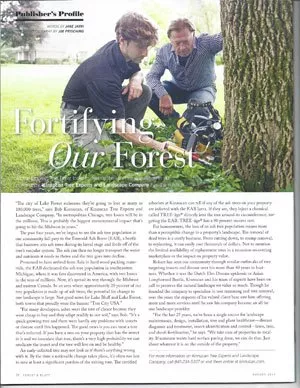 “The city of Lake Forest estimates they’re going to lose as many as 100,000 trees,” says Bob Kinnucan, of Kinnucan Tree Experts and Landscape Company. “In metropolitan Chicago, tree losses will be in the millions. This is probably the biggest environmental impact that’s going to hit the Midwest in years.”
“The city of Lake Forest estimates they’re going to lose as many as 100,000 trees,” says Bob Kinnucan, of Kinnucan Tree Experts and Landscape Company. “In metropolitan Chicago, tree losses will be in the millions. This is probably the biggest environmental impact that’s going to hit the Midwest in years.”
The past four years, we’ve begun to see the ash tree population in our community fall prey to the Emerald Ash Borer (EAB), a beetle that burrows into ash trees during its larval stage and feeds off of the tree’s vascular system. The ash can then no longer transport the water and nutrients it needs to thrive and the tree goes into decline.
Presumed to have arrived from Asia in hard wood packing materials, the EAB decimated the ash tree population in southeastern Michigan, where it was first discovered in America, with tree losses in the tens of millions. Now, it’s spread its way through the Midwest and eastern Canada. In an area where approximately 20 percent of our tree population is made up of ash trees, the potential for change to our landscape is large. Not good news for Lake Bluff and Lake Forest, both towns that proudly wear the banner “Tree City USA.”
“For many developers, ashes where the tree of choice because they were cheap to buy and they adapt readily to our soil” says Bob. “It’s a quick growing tree and there were hardly any problems with insects or disease until this happened. The good news is you can treat a tree that’s infected. If you have a tree on your property that has the insect in it and we inoculate that tree, there’s a very high probability we can eradicate the insect and the tree will live on and be healthy.”
An early-infected tree may not look as if there ‘s anything wrong with it. By the time a noticeable change takes place, it’s often too late to save at least a significant portion of the exiting tree. The certified arborists at Kinnucan can tell if nay of the ash trees on your property are infected with the EAB larva. If they are, they inject a chemical called TREE-age directly into the gree around its circumference, targeting the EAB. Tree-age has a 90 percent success rate.
For homeowners, the loss of an ash tree population means more than a perceptible change to a property’s landscape. The removal of dead trees is a costly business. From cutting down, to stump removal, to replanting, it can easily cost thousands of dollars. Not to mention the limited availability of replacement trees in a recession-recovering marketplace or the impact on property value.
Robert has seen our community through similar outbreaks of tree targeting insects and disease over his more than 40 years in business. Whether it was the Dutch Elm Disease epidemic or Asian Longhorned Beetle, Kinnucan and his team of experts have been on call to preserve the natural landscape we value so much. Through he founded the company to specialize in tree trimming and tree removal, over the years the requests of his valued client base saw him offering more and more services until he saw his company become an all-in-one landscape provider.
“For the last 25 years, we’ve been a single source for landscape maintenance, design, installation, tree and plant healthcare – disease diagnosis and treatment, insect identification and control – lawn, tree, and shrub fertilization,” he says. “We take care of properties in totality. If someone wants hard surface paving done, we can do that. Just about whatever it is on the outside of the property.
For more information on Kinnucan Tree Experts and Landscape Company call 847-234-5327 or visit them online at kinnucan.com.
Emerald Ash Borer Rapid Spread Seeks North Shore Community Effort
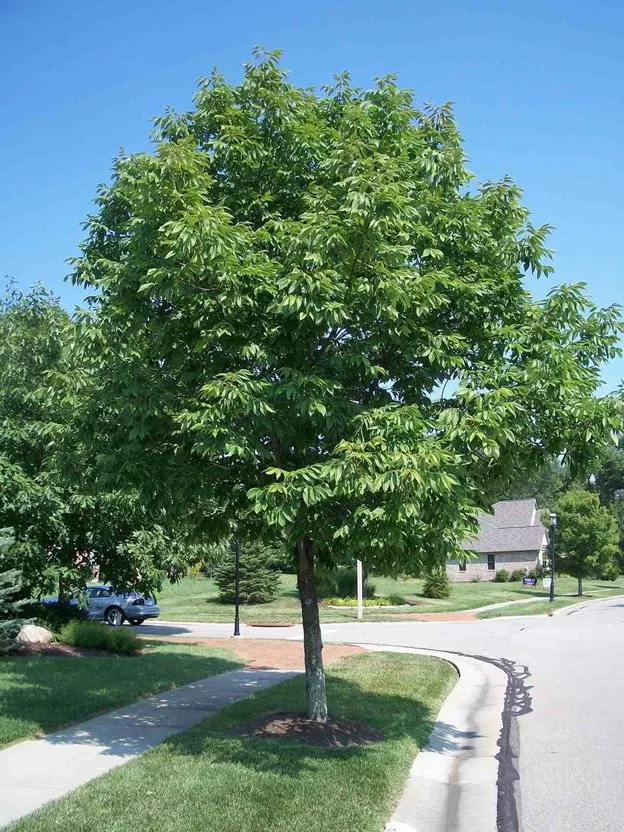
The Emerald Ash Borer is a pesky little insect that destroys your beautiful landscape and entire communities by invading Ash Trees. It is an infestation that communities have become aware of and are taking action against. Kinnucan Landscaping & Tree Company has been there from the start and is one of the only TCIA certified companies in the area. The certification is extremely difficult to attain, making Kinnucan one of the top leaders in battling the emerald ash borer infestation.
Banning Together To Fight This Bug
The spread of the Emerald Ash Borer is extremely fast especially with the EAB having no natural enemies. An infested area is defined by any area within 15 miles of an EAB population. Stay on the cautious side if your county or surrounding counties suspect an EAB infestation and anticipate the EAB to save your trees. Communities on the North Shore have been spreading awareness and dedicating portions of their website to stop this creepy crawler. Communities such as Lake Forest, Lake Bluff, Wilmette, Glenview, and Evanston have been proactive in saving precious trees.
Treat It & Get Some Relief!
Prevention is key and should be completed by a professional as soon as you know there are EABs in your area. There are many methods to treating trees affected by the EAB. A certified tree expert like Kinnucan has the experience to accurately evaluate your yard and has the cutting edge technology for prevention. Kinnucan currently uses Tree-Age that is injected into the tree trunk every 2 years. This method is a great alternative to tree removal and replacement. However, as a last resort option if it is too late for your tree to be saved from the EAB, Kinnucan can remove and replace your tree with a new type that is not susceptible to the EAB.
EAB (Emerald Ash Borer) – Coming to a Neighborhood near you….
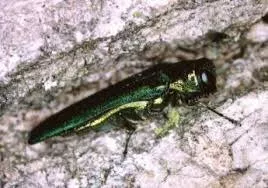
Have you ever wondered where these little pests came from? EAB is exotic beetle that originated in Asia and Eastern Russia. They were accidentally imported into the US (Detroit, MI) and Canada during the late 1990’s on cargo ships and airplanes concealed in wooden packaging. Unfortunately they were not identified until 2002 due to their knack of quiet invasion. EAB are described as the “equal opportunity killer” because they are far from finicky — they attack healthy, ailing, urban, rural, small and large ash trees. It is reported that 50-100 million ash trees have been killed in the US with an estimated $3.5 billion in damages reported annually. These damages can be devastating to the landscape of even the best of neighborhoods.
Their quick invasion across the country has been attributed to transport of firewood, trees, logs, etc; which necessitated the USDA and other regulatory agencies to implement and enforce quarantines and fines prohibiting transport of those known potential carriers out of reported infested areas.
As alarming as this may sound, rest assured – you can count on Kinnucan Tree Experts and Landscape Company to take the stress out of saving your beautiful yard and community landscape. We have been on top of this epidemic since the onset, and are TCIA Certified. We are working closely with Naperville, Bolingbrook, Grayslake, Lake Bluff, Lake Forest, Lisle, Schaumburg, Tinley Park, Warren Township and the City of Chicago in educating residents and working closely with city council in preserving the landscape of our communities from EAB destruction. Our expert Arborists are armed and ready for these Mid-May to July dwellers.
With early detection through inspections, proper preventative measures, Tree-age injections, and expert recommendations, all is not hopeless. Tree removal is a last resort measure, and must be done professionally to ensure your safety, as well as the removal of all infestation and disease. If a tree is lost, we will be by your side to bring your landscape back to life in a healthy and beautiful manner.
Contact us today to beat the EAB before they find you! Have your trees inspected. With early detection and consistent Tree-age injections (at least every other year) you can save your Ash!
